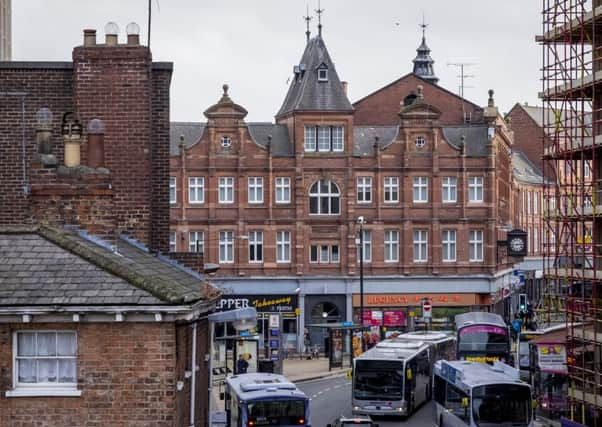Clean air zone to be considered to cut city centre bus emissions


There are blackspots of air pollution across the city, York Council’s executive member for the environment has said, with its narrow streets and historic walls designed centuries before its battle with traffic and roadworks began. Now new plans are to be considered in coming days over a ‘clean air zone’, enforcing restrictions on buses in the centre in attempts to drive down emissions.
Such measures are a small step in a wider drive, said Coun Andrew Waller, as York moves towards more sustainable travel with a focus on its cycling past.
Advertisement
Hide AdAdvertisement
Hide Ad“Air pollution is a health issue,” said Coun Waller. “And we are looking at more sustainable transport. This is the first part, which is about changing the emissions from particular vehicles. We want to promote sustainable transport, to have more cyclists and walkers. We are a cycling city, but there is potential to do more. It’s about reversing a trend from the 1960s of pushing more and more people into their cars, and recognising that quality of life is improved by giving people more options.”
York, alongside several cities including Leeds and Sheffield in the region, had been identified as one which breached World Health Organisation limits for air pollution last year. All local authorities must review air quality and, where objectives are not being met, to draw up action plans.
York’s third such plan, adopted in 2015, identified older diesel buses as a “significant” source.
The clean air zone, aimed at cutting emissions from the city’s bus fleet, would see an insistence upon the use of electric or low emissions vehicles. This would apply to buses that enter the zone, within the inner ring road, more than five times a day, alongside measures to tackle idling.
Advertisement
Hide AdAdvertisement
Hide AdIf approved, the clean air zone would come into effect next year, with a 12-month ‘sunset period’ to ease in the new rules.
A consultation over the proposals, carried out over six weeks from August last year, had drawn over 250 response. Overall, 90 per cent were in favour of the scheme, with a third of respondents arguing it should also be extended to lorries. One in eight had also stated they had a health condition as a result of poor air quality.
The council’s executive are to be asked to consider the plans next Thursday, with an investment of £1.6m which, if agreed, would then go to full budget council in February.
“We have a number of hotspots in the city centre, with narrow roads and traffic networks. And we recognise that there needs to be an investment,” said Coun Waller. “All the data we are collecting demonstrates that there are some areas where potential steps are needed.”